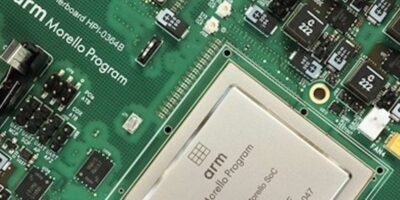Certified security is combined with a tamper status detection mechanism and battery-free sensing in the NTAG 22x DNA StatusDetect IC family by NXP. The ICs measure a change in ambient conditions, such as moisture, liquid fill level or pressure and allow developers to combine secure authentication with opening status detection or condition monitoring of products to help maintain a secure supply chain and product integrity.
Physical products can be authenticated by leveraging the NTAG 22x DNA IC’s secure unique NFC (SUN) authentication message feature. This allows manufacturers to cost-effectively combat counterfeits and supply chain fraud, said NXP.
The electronic tamper status detection of the ICs enables manufacturers or product users to verify a product’s unauthorised opening. By measuring capacitive changes in an item’s environmental conditions such as moisture, pressure or fill level, upon a simple tag readout, it is also possible to ensure product quality remains intact or capture digital sensing data for healthcare, retail or industrial applications.
According to NXP, the inclusion of security-certified NFC sensing turns a tag into a simple battery-less sensing device to detect a physical product’s first opening status, or a change in its specific ambient condition. It can help manufacturers protect product integrity, whilst enabling a new level of intelligence to assure product quality
The NTAG 22x DNA family is Common Criteria EAL3+ -certified, and features a powerful, cryptographically secure authentication message that dynamically changes on every NFC phone tap, making the taps unclonable, without requiring a user application.
The NTAG 22x DNA StatusDetect also includes configurable conductive or capacitive tamper detection, with once-open status irreversibly stored and protected in the IC memory without the need for a dedicated app. The conductive mode is suitable for tamper-evident labels and seals fixed on to a product or its package. The capacitive mode is suitable to integrate the tag into a physical product, and is also harder to reconstruct by a fraudster, said NXP.
The StatusDetect ICs can also be used as a passive sensing device to detect an environmental change influencing the capacitance value, interpreted with a mobile or cloud-based application. This facility allows new applications for medical IoT devices, such as a plaster that can detect moisture levels for wound care, fill level sensing for smart injectable dosage devices. It can also be used for consumer products as refill reminders based on package fill levels and leak detection.
Security features include a 7byte identifier, a SUN message authentication using an AES-128 key and has user memory protected with 32-bit password or with mutual authentication with AES-128 key.
The StatusDetect devices have capacitive measurement with up to 64 granular steps and automated mirroring of UID, NFC counter and status value into IC’s user memory as part of NFC-NDEF message, secured with a SUN message code.
The ICs are available in sawn and bumped wafer format (120 and 75 micron) and with an internal tuning capacitance of 50pF.







